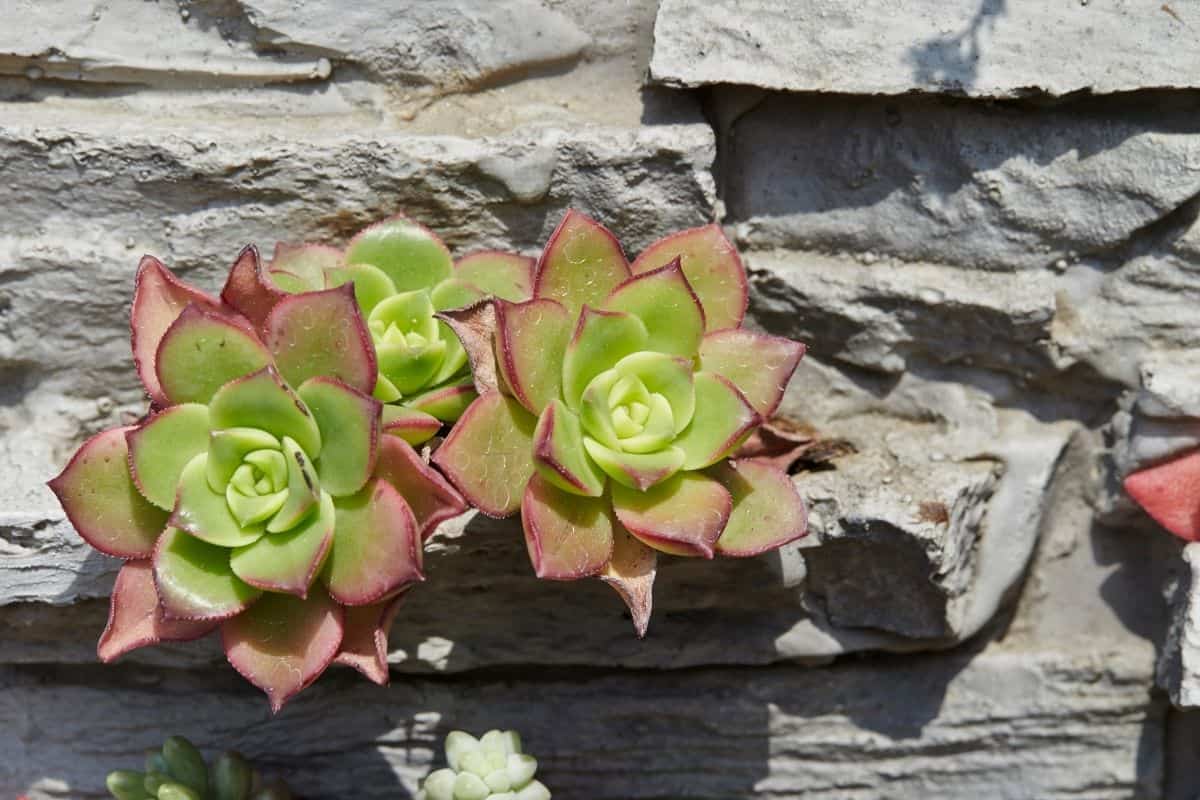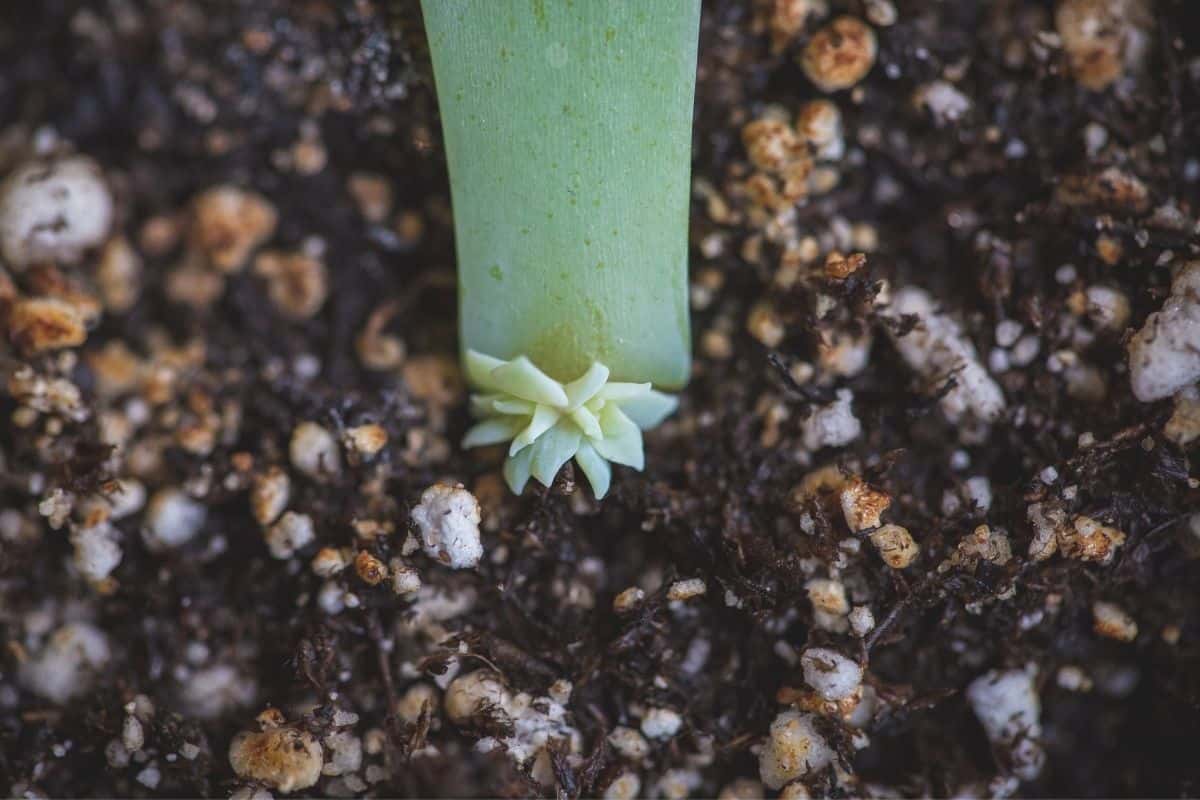
More than a few succulent lovers have looked at their favorite plant and wished they could have many more just like it. Thankfully, succulent reproduction is not a complicated or elaborate process. With a little knowledge, you too can breed and propagate succulents. Whether you’re interested in owning more of your favorite plant or you want to create the next big hybrid, succulent reproduction is quite easy, even for inexperienced gardeners.
Related Article: How to Separate Succulents
Succulent Reproduction in Nature

In their natural environment, succulents are capable of reproducing both sexually and asexually. If those terms sound like something you studied in middle school science class, you may need a refresher. For plants, sexual reproduction occurs when one plant is pollinated by another, usually with the help of pollinators like bees and other insects. Once pollinated, the plant produces seeds, usually inside of a type of fruit.
Asexual reproduction occurs when the plant reproduces without the genes of another plant. For succulents, this occurs in the form of offsets and cuttings. Although cuttings sound like a more modern method of propagation, it actually occurs in nature when the plant is broken or damaged. This allows the succulent or cacti to reproduce even when it’s injured. Remember, succulents are survivors!
Read Related Topic: Best Light Cycle for Flowering Succulents
Different Methods of Propagation
In modern succulent gardening, succulent reproduction is commonly referred to as propagation. This is because most succulents are bred and grown under the guidance of an expert gardener. In the wild, succulents are left to reproduce by any means necessary, but domestic succulents are chosen very carefully to produce the most unique and beautiful plants. Here’s a quick overview of the various methods of succulent propagation.
Cuttings

One way that succulents reproduce is through leaf cuttings. In nature, this occurs when a leaf falls off the plant. In terms of gardening, leaf cuttings are taken by gardeners seeking to propagate their succulents. This is also a great solution if you happen to bump your succulent, or otherwise accidentally knock off a leaf or two.
No products found.
Leaf cuttings are a popular way to propagate succulents such as Echeveria and Sedum. These types of succulents grow readily from leaf cuttings but it’s important to note that leaf cuttings do not work with all types of succulents. Obviously, cacti have no leaves, so they do not reproduce in this manner.
Read Also: How long Do Succulents Live
The other type of cutting that is often used to propagate succulents is stem cuttings. Stem cuttings occur when a portion of the plant’s stem is removed as opposed to just a leaf. In most cases, this does not damage the original plant and it can actually regrow the portion that was removed. In nature, this allows succulents and cacti the ability to reproduce when a plant is damaged by wildlife or weather.
Stem cuttings are probably the fastest way for succulents to reproduce. This is because the cutting is basically a whole plant, it just needs to develop a root system. Stem cuttings work particularly well with cacti, which tend to be slow growing. Stem cuttings are also a great way to trim back succulents that have become etiolated or stretched out.
It’s important to note that care should be taken when propagating succulents with cuttings. While this is a natural process that occurs in the wild, as succulent caretakers, we want to protect the health of our plants. In order to make this process as safe as possible, use sterile scissors or shears to take your leaf or stem cuttings. Before planting your new cuttings you’ll also want to allow the wounds to callous before placing them into the soil. Taking these extra precautions protects your plant from unnecessary bacterial or fungal infections.
Read Also: Best Time to Transplant Succulents
Offsets

Many species of succulents and cacti reproduce asexually through offsets. Sometimes referred to as offshoots or pups, these baby plants are exactly what they sound like. They are tiny plants that sprout up around the base of the mature succulent. This is a common method of reproduction in succulents such as Aloe, Agave, and Mammillaria. Although most species produce offsets underground, some succulents,such as Kalanchoe daigremontiana Kalanchoe daigremontiana , produce offsets on their leaves.
Replanting offsets is as simple as removing them from the mother plant and replanting elsewhere. Succulent pups can be removed by either cutting them from the mature plant with a clean knife, or gently wiggling them free. As with cuttings, offsets should be allowed to dry and callous before replanting them.
Seeds

Like any other type of plant, both succulents and cacti are able to reproduce sexually by producing and growing from seeds. However, you may have noticed the lack of succulent seeds at your local garden center’s seed collection. This is due to the unpredictable nature of growing succulents from seeds.
To produce seeds, a succulent must be cross-pollinated by another plant. Although pollination is more common in nature, it’s a bit more difficult with domestic succulents, especially those grown indoors. Some gardeners, especially those interested in hybridization, pollinate their succulents manually in order for them to produce seeds.
However, growing succulents from seed can result in unpredictable results. When you propagate a plant from a cutting or offset, you can be fairly certain about what that succulent will look like when it grows up. With seeds, you never quite know what you’re going to get until the seed germinates and grows into something recognizable. Even if you’ve pollinated a plant with the pollen of the same cultivar, you could end up with different results due to genetic recombination.
Additionally, depending on the conditions your seeds are exposed to, you may be waiting a very long time. It can take seeds anywhere from a few weeks to a year to germinate. After germination, you’ll also need to wait for the seedling to grow to maturity.
Succulent seeds must also be treated rather gently as they tend to be quite small. It can be easy to wash the seeds of succulents and cacti away when you water them, so care must be taken to prevent them from disappearing.
You Might Also Like:

